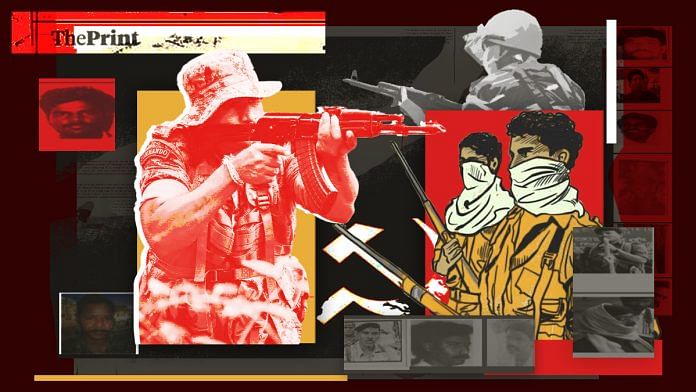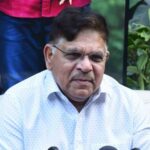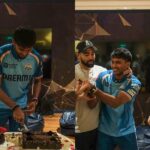The strange thing about Keshava Rao, alias Basavaraju, who was killed at 70, was that his cause had already died years before he embraced it. Even though Prime Minister Manmohan Singh Maoism “the greatest internal security threat to our country,” it was evident even by the 1980s that neither the ideology nor its practitioners had influence outside of the Adivasi enclaves of central India. To India’s working class and peasantry, they were utterly irrelevant.
For most Indians, the years after Independence were a time of great hope. For Indian communists, however, they provided a painful education: their hopes of a revolution were illusory. In the 1957 elections, the communists were decimated even in their strongholds in Telangana, the site of the great peasant rebellion of 1948-1951. The writer and editor Romesh Thapar: “Ostensibly, conditions all over the country seem ripe for revolutionary change. But the parties who declare their adherence to Marxism and Leninism seem struck by an incapacity to evaluate the situation, let alone lead it.”
The movement splintered: The Communist Party of India accepted constitutionalism and began supporting some Congress policies; the new Communist Party of India (Marxist) embraced continued political struggle. Then, the 1967 rebellion in Naxalbari fractured the CPI(M) from within, with many calling for the party to adopt armed struggle. Large parts of the CPI(M) leadership in Andhra Pradesh, scholar Shantha Sinha, had drifted towards the Maoist position by 1968.
For a generation of Maoists, the struggle that evolved in Srikakulam became the site where these debates were played out in practice. The colonial period, scholar, had seen Adivasi lands handed over to a new class of zamindars, who in turn raised rents through tax farmers. Liquor sellers, moneylenders, and merchants emerged in the wake of this new money-based economy.
Government schemes meant to end the exploitation of the Adivasis achieved little. In one case, Sinha records, an irrigation project built to benefit Adivasis in 1963-1964 actually provided three-quarters of its waters to a non-tribal landlord. Local cooperatives set up to serve Adivasis stocked soap and cosmetics, not salt, grain or kerosene.
Elsewhere in India, political competition had provided some redress—however ineffectual—to other exploited communities. The Adivasis of Srikakulam, though, existed on the fringes of the new nation-state’s reach and well beyond its sphere of interest.
From 1957-1958, the Adivasis began to encounter a new kind of visitor. Led by Palle Ramulu, the one-time schoolmaster at the village of Kudapalli, groups of Left-wing activists known as sanghams began travelling the region, demanding that Adivasi men cut their hair short and women cover their breasts. “The alarm would go out even as a sangham worker approached the village, and all the women would disappear to dress,” Sinha records, “and once he left, they would discard the dress.”
Adivasi moral rectification was to remain a leitmotif of the Maoist movement. The describes how members of the Marxist Co-ordination Committee in Jharkhand demolished Adivasi liquor-brewing stills, central to their ritual and culture: “The men started kicking over and hitting the aluminium and clay pots, shouting, ‘Stop drinking and selling alcohol!’ ‘Long Live MCC!’”
The Maoist moral crusade did have real impacts, though. Tribal literacy was spread through night schools. Adivasis began to assert their rights to land and resources, including grain. From 1960, strikes by Adivasi farm workers also became more common. Adivasis, battered by decades of failed colonial-era rebellions, were again beginning to develop the courage and a language with which to confront their oppressors. The pressure told, though. Large numbers of Sangham activists began to face police cases, and incidents of police firing on protestors began to erupt.
Late in November 1968, 400 Adivasis armed with ancient muzzle-loading guns, as well as bows and arrows, attacked Theegala Narasimhalu, the largest moneylender of the village of Pedagothili. This first attack was followed by a series of raids. In some cases, the Sanghams seized cash and destroyed records of debt owed by Adivasis.
The fighting grew increasingly brutal through 1969. The landlord, Balleda Krishnamurthy, and his brother were executed in broad daylight, watched by an audience of hundreds. The head of Pratapchandra Padi, the president of the Devabandupuram Panchayat, was paraded around adjoining villages. These kinds of killings would become increasingly common.
From the summer of 1969, though, the terror began to splutter. For one, the state responded to Adivasi grievances, with then-Home Minister J Vengala Rao initiating a programme of large-scale food aid and small loans. Then, the Central Reserve Police Force began to steadily build up its numbers across Srikakulam. Top Maoists were arrested or killed, and large numbers of Sangham cadre were eliminated. The Maoists were forced to retreat into an ever-smaller area in the hills.
In 1970, the leader of the Srikakulam Maoists, V Mallikarjudulu, had fantasised: “We can seize arms on a large scale and soon form the people’s army. So in a short time, we will be in a position to march to Bengal.” He was killed by the CRPF in an encounter on the Ramrai hills just weeks later.
Keshava Rao left his village after the tenth grade to study at the high school in nearby Tekkali, soon after the decimation of the Srikakulam uprising. From the sparse accounts of his childhood friends, there’s little to suggest the teenager was involved in local radical circles. “Keshava Rao used to play kabaddi a lot,” one told. “He was fond of agriculture. After coming home from school, we used to fetch water from an agricultural well and then walk from Jiyyanpet to the Kotabommali cinema hall.”
Later, while studying for an engineering degree in Warangal, Keshava Rao joined the, a Maoist-linked body that emerged in 1974. In 1980, he went underground, accused of having murdered an Akhil Bharatiya Vidyarthi Parishad leader. Later, it emerged he had joined the People’s War Group, the Maoist faction founded by Kondapalli Seetharamaiah in 1980.
In 1982, though, the PWG found itself in the improbable position of being an ally of the establishment. Telugu Desam Party leader NT Rama Rao described Maoists as “true patriots who have been misunderstood by ruling classes.” The PWG aided the TDP campaign in the next year’s Assembly elections. The long period of peace between the PWG and the Andhra Pradesh Government,, enabled the Maoist movement to rebuild itself after the decisive defeat of 1970.
For years, the Maoists gained revenues by from Tendu-patta harvesters—the leaves used to wrap beedi cigarettes—as well as mine-owners and government-works contractors. These practices became deeply entrenched, stretching far beyond Andhra Pradesh into Chhattisgarh, Maharashtra and Odisha.
Late in 2003, though, the. Keshava Rao led an attempt by the PWG to assassinate then-Chief Minister Chandrababu Naidu. The Andhra Pradesh government responded ferociously, forcing the Maoists to retreat into the forests of Bastar. Keshava Rao is believed to have organised several brutal attacks on security forces—killing 36 police at Balimela in 2008 and 76 at Chintalnar in 2010. The beheading of and were commonplace. In 2001, local journalists and officials in Chhattisgarh’s Sarguja were as three defectors from Maoist ranks were shot by a firing squad in front of a large audience.
Like in 1969, though, terror didn’t work. Adivasis supported Maoists sometimes for tactical gain or to avenge state violence, but had little interest in the project of making a revolution. The state slowly, clumsily, and brutally built up the capacity to crush the insurgency, just as it had in the past. Keshava Rao’s story teaches us, ultimately, about how much pointless suffering can be unleashed by toxic ideas untethered to the real world.
Praveen Swami is contributing editor at ThePrint. His X handle is @praveenswami. Views are personal.
(Edited by Theres Sudeep)








